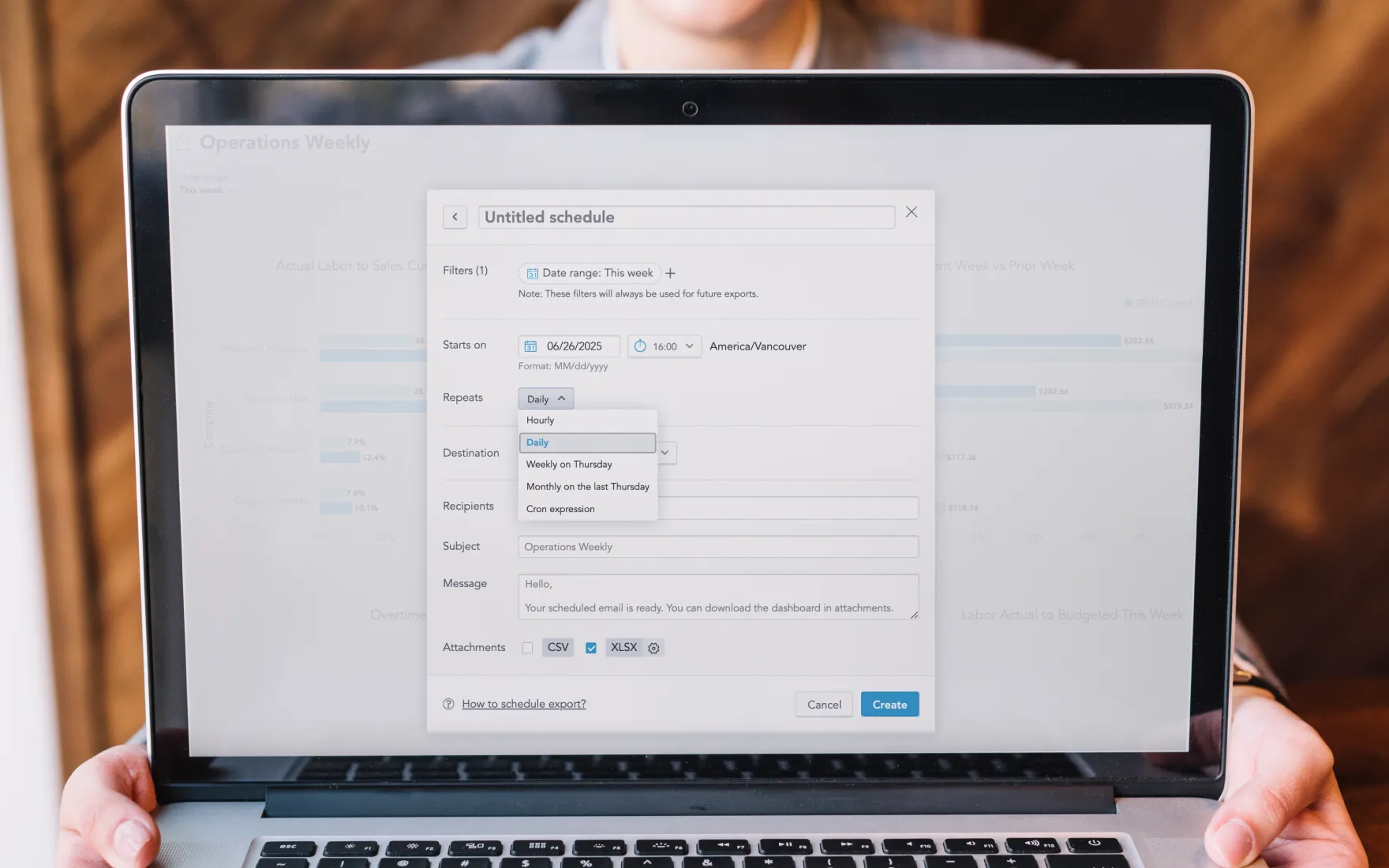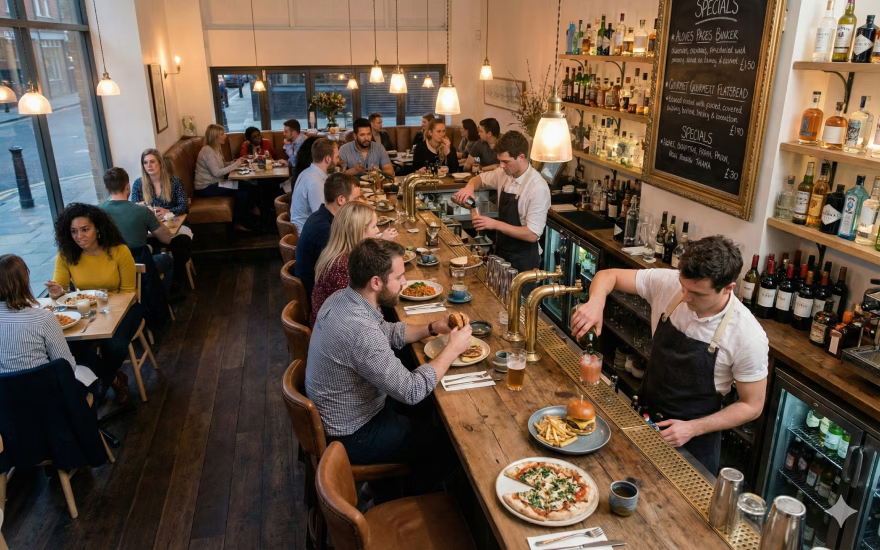Crafting a Winning Fast-Casual Business Plan: Detailed Guide

Are you dreaming of owning a fast-casual restaurant? You're not alone. The fast-casual industry is the fastest-growing in the restaurant industry, with a Compound Annual Growth Rate (CAGR) of 11.56% from 2022 to 2027.
In fact, the popularity of fast-casual restaurants has surpassed that of traditional quick-service restaurants, with customers flocking to enjoy higher-quality ingredients, customizable menu options, and a relaxed atmosphere. With these trends in mind, it is vital to craft a comprehensive business plan to set up your restaurant for success.
A comprehensive fast-casual business plan is the blueprint for achieving your goals and turning your dream into a thriving reality. This article will share the essential steps, insider tips, and resources needed to create a standout fast-casual business plan.
What is a Business Plan?
A business plan is a comprehensive, strategic document outlining the objectives, strategies, and financial projections for a new or existing business venture. It serves as a roadmap for entrepreneurs, guiding the growth and development of their business while providing critical information to potential investors, lenders, and partners.
A well-structured business plan typically includes an executive summary, the company vision and description, a market analysis, the organizational structure, product or service offerings, a marketing and sales strategy, and detailed financial projections.
Step-by-Step Guide to Developing a Successful Business Plan
1. Begin with a Clear Vision
Projected Time: 1-2 weeks
Before embarking on the process of writing a business plan for your fast-casual restaurant, take a moment to reflect on your passions and motivations. Ask yourself why you are drawn to the fast-casual industry and how you can leverage your interests to create a truly unique dining experience.
Whether it's your love of cooking, desire to provide healthier options, or passion for creating a welcoming atmosphere, these personal elements will be the driving force behind your concept. Starting with a clear vision will set the foundation for a successful and fulfilling venture.
From there, you can determine your brand identity, core values, and target audience to better guide your plan and ensure consistent messaging.
2. Conduct Market Research and Analysis
Projected Time: 3-4 weeks
Required Resources:
- Surveys
- Competitor Analysis
- Online Research
- Industry Reports
Gather information about your local market, potential competitors, and your target audience's preferences. For instance, the fast-casual restaurant industry has grown by over 550% since 1999. It is expected to grow by over 55 billion USD between 2022 and 2027, almost doubling the market size from 2017. But who exactly is driving this growth?
Millennials and Gen Z are the largest customer base for fast-casual restaurants, representing 60% of all visitors. And when it comes to cuisine, North American, Mexican, and Mediterranean are currently dominating the market.
Furthermore, you should research the ideal location for a fast-casual restaurant. While fast-casual restaurants can be found in a variety of locations, certain areas tend to perform best. According to recent statistics, fast-casual restaurants located in downtown cores or urban areas have the highest sales per unit, with an average of $5,000 daily. These locations tend to have a high density of office workers and residents looking for a quick and convenient dining option. Shopping centers are another lucrative location, as foot traffic can be high with customers who are looking for a break from shopping.
Researching the market is essential for an entrepreneur entering any industry. You have to assess the existing fast-casual landscape, identify gaps in the market, and analyze current trends. When you find sample size estimates, this research will help you refine your concept and make informed decisions as you develop your menu offerings, pricing, and marketing strategies.

3. Develop Your Menu and Pricing Strategy
Projected Time: 2-3 weeks
Required Resources:
- Chef
- Culinary Consultant
- Food Suppliers
Based on your market research, create a unique and appealing menu that caters to your target audience's specific tastes and preferences. Focus on high-quality and fresh ingredients, efficient preparation methods, and innovative flavor combinations that set your fast-casual restaurant apart.
Furthermore, ensure your pricing is competitive in the market while allowing for profitability. The average price per receipt in a fast-casual restaurant is about $9 to $13, so aim to price your menu within that average, but you should also check local competitors for a more accurate price range.
4. Design the Physical Space and Customer Experience
Projected Time: 4-6 weeks
Required Resources:
- Architects
- Interior Designers
- Restaurant Consultants
Collaborate with architects, interior designers, and restaurant consultants to create a functional and appealing layout for your fast-casual restaurant. There is no specific average size requirement for a fast-casual restaurant as it can vary depending on a range of factors such as location, concept, and target audience. However, it's worth noting that fast-casual restaurants tend to be smaller in size compared to traditional full-service restaurants.
Generally, a fast-casual restaurant may range from 1,500 to 2,500 square feet, with an average size of around 1,750 square feet. This compact size allows for a more intimate and cozy dining experience with lower operating costs.
When choosing your location, it's important to consider the size and layout to ensure it matches your brand while providing a comfortable dining experience for your customers. Consider aspects such as seating arrangements, kitchen design, counter space, and décor. Factor in customer flow, employee efficiency, and accessibility requirements to ensure a seamless experience for both guests and staff.
5. Create a Marketing and Promotion Plan
Projected Time: 2-3 weeks
Required Resources:
- Marketing Consultant
- Graphic Designer
- Social Media Manager
Develop a comprehensive marketing plan to build anticipation for your fast-casual restaurant's opening and to maintain a steady flow of customers post-launch. Leverage social media, local press, community partnerships, and targeted advertisements to reach your audience. Consider offering promotions, loyalty programs, and special events to keep guests engaged and returning.
Approximately 33% of Millennials in the US use social media and online advertising to select fast-casual restaurants to dine at. And since Millennials are a primary demographic for fast-casual restaurants, it is essential to have an engaging and up-to-date online presence. Learn more about leveraging social media to promote your restaurant, by checking out our article on five successful social media strategies.
.avif)
6. Prepare Financial Projections
Projected Time: 3-4 weeks
Required Resources:
- Accountant
- Financial Advisor
Developing realistic financial projections is a crucial part of your fast-casual business plan. Estimate startup costs, ongoing operational expenses, and projected sales. Work alongside an accountant or financial advisor to ensure accuracy and to help you make informed decisions regarding necessary capital investments and funding sources.
7. Assemble Your Dream Team
Projected Time: 2-3 weeks
Required Resources:
- Recruitment Agencies
- Online Job Boards
- Industry Contacts
Identify the key team members required to make your fast-casual restaurant a success. This may include a general manager, kitchen staff, front-of-house staff, and marketing personnel. Outline their roles, responsibilities, and qualifications in your business plan to provide a clear understanding of your staffing needs and expectations.
In assembling your team, you should consider streamlining the recruitment, onboarding, and employee management process. One solution is to leverage an all-in-one HCM (human capital management) platform like Push, which can help you recruit and onboard talent while simplifying payroll and scheduling.
With Push, you can easily manage your team's information, track hours, and generate reports, all in one centralized platform. This will save you hours, enabling you to focus on what matters – providing your customers with an exceptional dining experience.

8. Finalize and Present the Business Plan
Projected Time: 1-2 weeks
Required Resources:
- Editor
- Graphic Designer
With all components in place, refine and polish your business plan. Double-check the accuracy of all figures, ensure consistency in formatting and tone, and engage a proofreader or editor to eliminate errors. Once completed, present your business plan to potential investors, partners, or lenders to secure the necessary funding to launch your restaurant.
Final Thoughts on Crafting a Fast-Casual Business Plan
Creating a comprehensive fast-casual business plan is a vital step on the road to launching a successful restaurant. By following this step-by-step guide and allocating ample time for research, planning, and collaboration with expert team members, you'll be well-prepared to bring your fast-casual concept to life. Remember, thorough preparation and a well-executed plan are key ingredients to thriving in the competitive restaurant industry.
If you're interested in learning more about how Push can help you manage your fast-casual restaurant's staffing needs, including recruitment, onboarding, payroll, and scheduling, we invite you to book a demo with us today.



